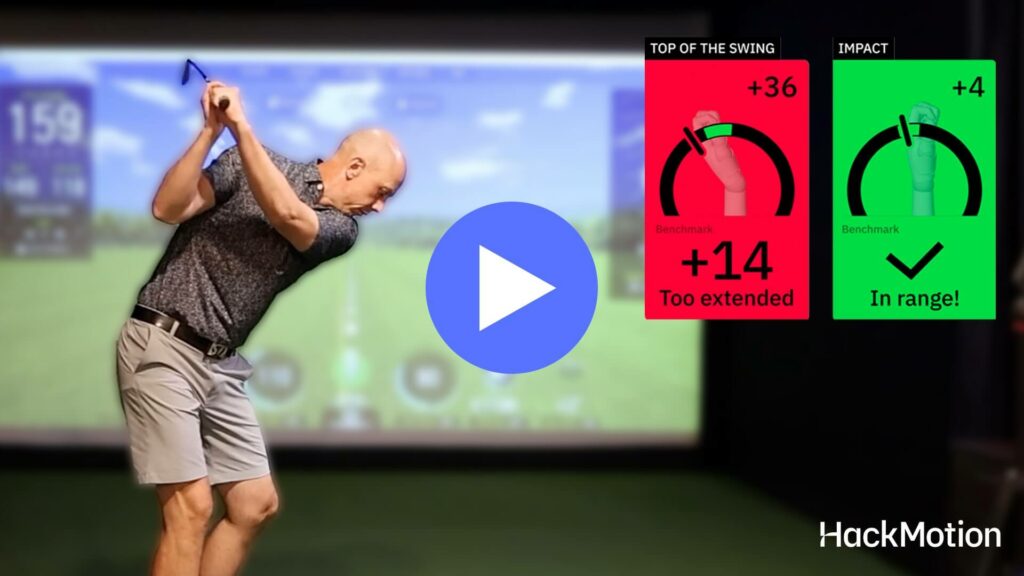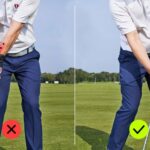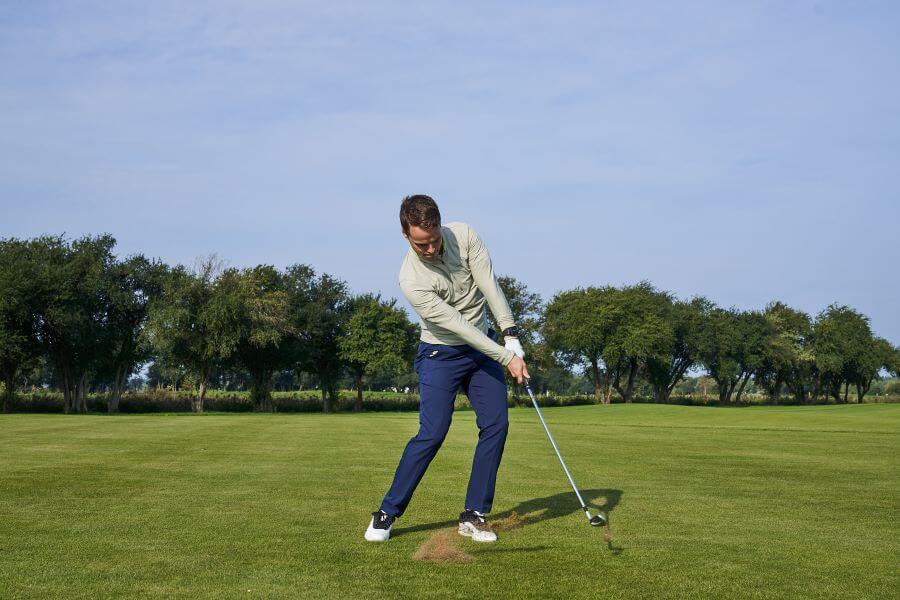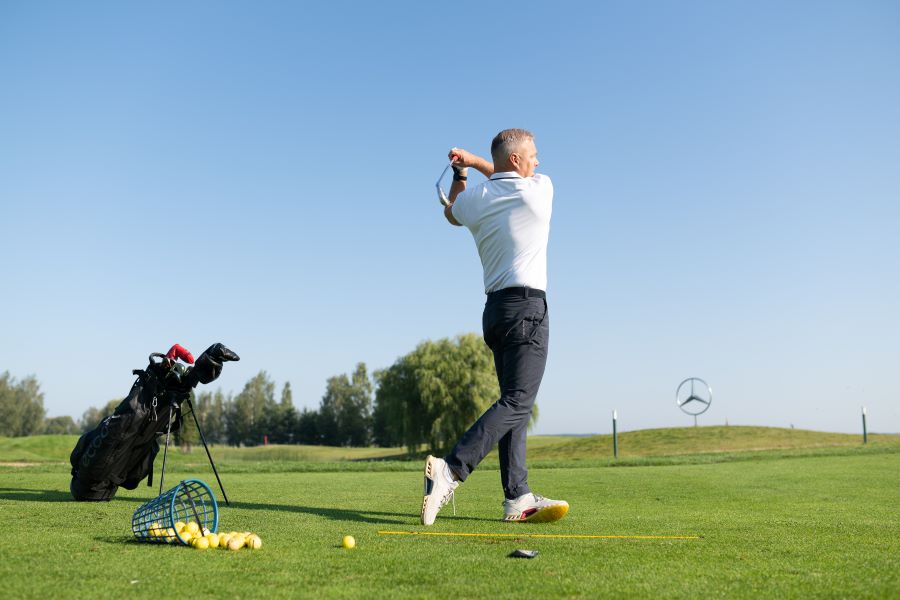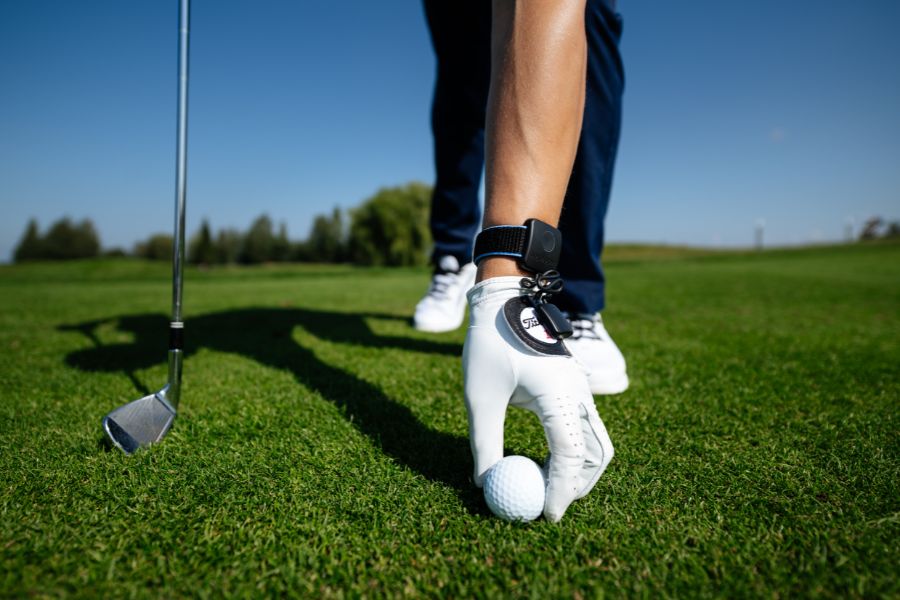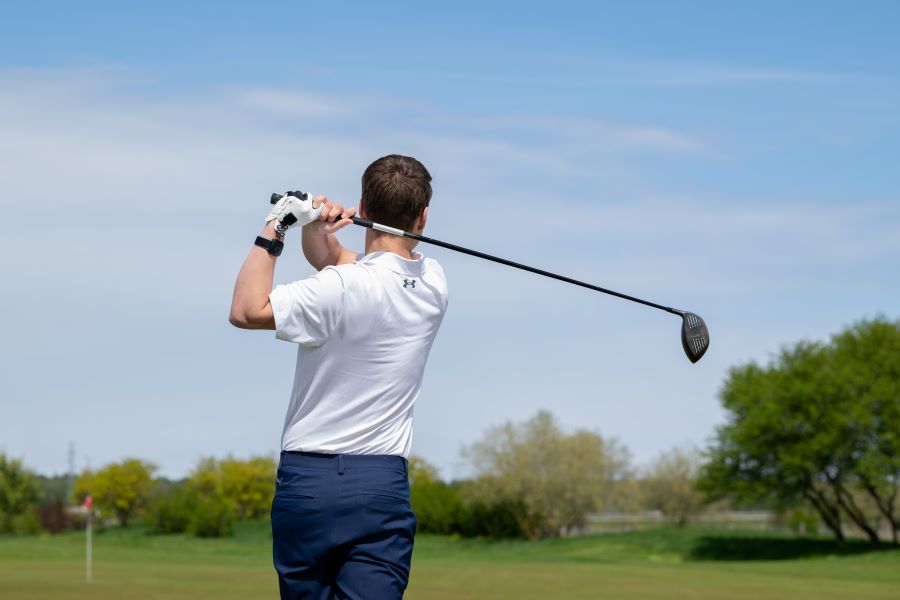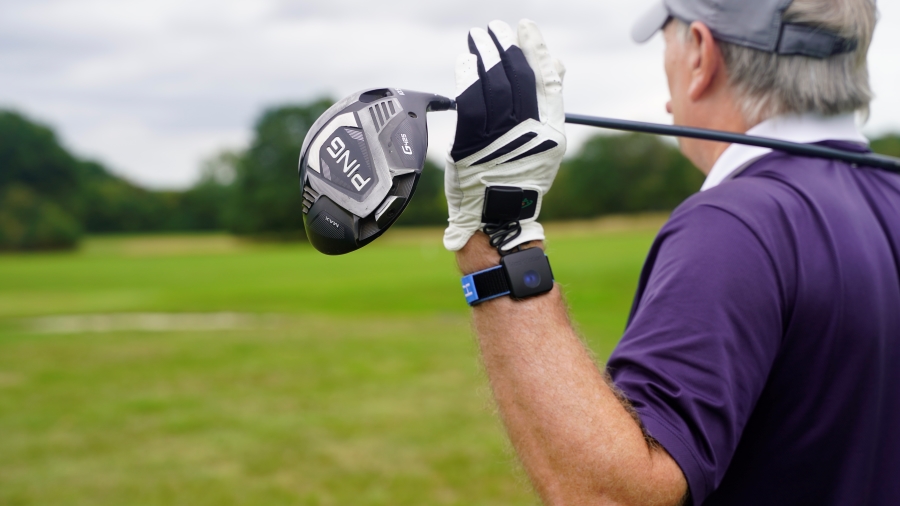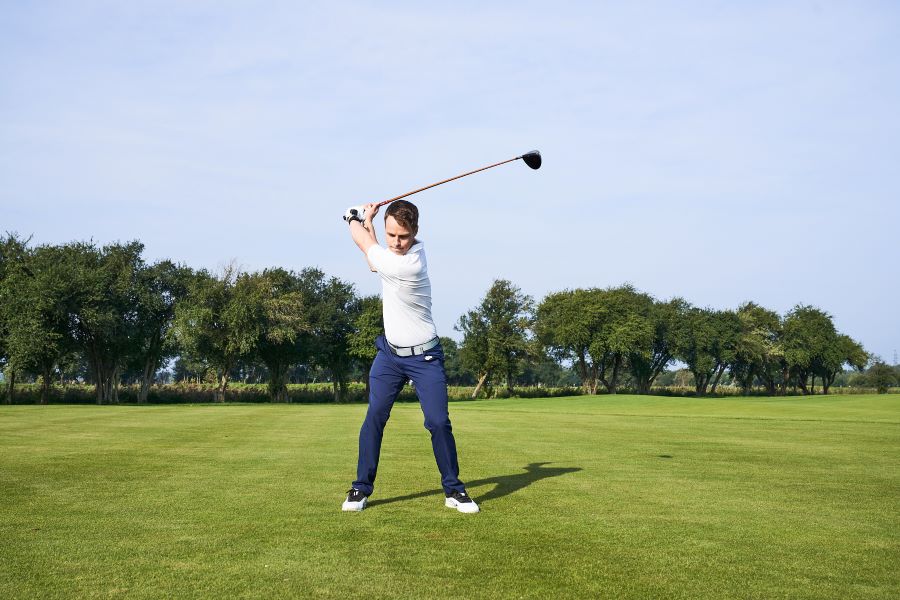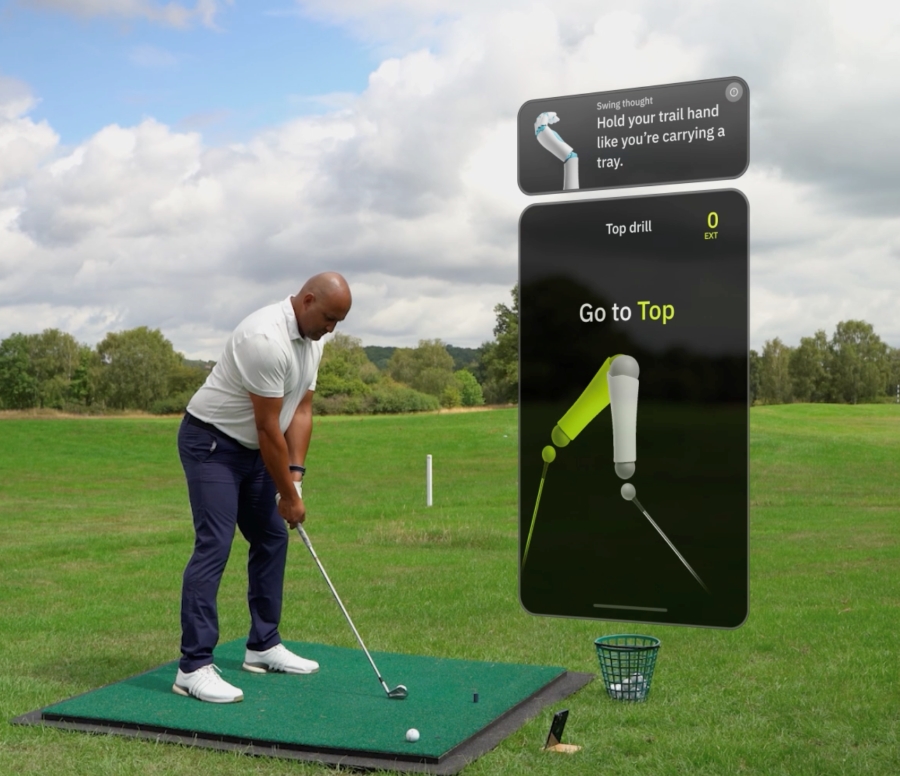Hand Position in Golf Swing: Complete Guide with Checkpoints & Practice Drills
If you are a golfer who likes checkpoints and guidelines when practicing, you are in the right place.
We are only connected to the golf club with our hands, so having our hands in the correct spot when playing a round of golf is crucial.
Hand position in the golf swing changes from setup to the top of the backswing to impact.
We will show you exactly what your hands and wrists should be doing (especially the lead hand) and how you can incorporate this information back into your practice and training.
Hand Position in Golf Swing (Key Takeaways)
If you don’t have time to read our entire guide on hand position in the golf swing, here are some of the most important points to remember:
- Hand and wrist positions are closely related in the golf swing. The best players strike the ball with a slightly flexed lead hand.
- One of the biggest struggles golfers face is overactive hands; if the hands get overactive, there is too much inconsistency in the golf game.
- Be careful not to take the club back with only your hands. Incorporating the shoulders and lower body can help set the tone for the rest of the swing and ensure that the hands move correctly throughout the shot.
- Wearing HackMotion on your wrist will help ensure your hand is in the right position at setup, at the top of the backswing, and again at impact.
Contents
Hand Positions Throughout the Golf Swing
Before we break down what your arms are doing in each position of the golf swing, take a look at the interactive slow-motion swing to see how your hands and wrists move throughout the swing and gain a clearer understanding.
Setup and Address
At address, you want to have your hands in a neutral position. This includes both your grip and the placement of your hands in relation to the clubhead and golf ball.
- The club shaft should be aligned with your lead forearm.
- Your hands can be roughly in line with the ball.
- Avoid starting the swing with an overly cupped (extended) or bowed (flexed) lead wrist.
One helpful checkpoint: the back of your lead hand should mirror the clubface. This connection gives you instant feedback on how your hands are influencing face angle.
Even before you swing, rehearse what your hands should feel like through the ball. Practice setting the shaft slightly forward with a flat or slightly flexed lead wrist. This gives you a solid model to return to during the swing.
Takeaway
During the takeaway, focus on maintaining a stable hand and wrist position. Many players fall into the trap of over-hinging or twisting the club early. This opens or shuts the clubface and leaves you playing catch-up later in the swing.
- Allow the shoulders, arms, and body to move in unison.
- Keep the clubhead low and slow.
- Let the hands move with the body, not dominate it.
Once the club is parallel to the ground (P2), you can begin gradually hinging the wrists.
Drill to try:
This drill helps you build a compact and controlled takeaway by presetting the wrist hinge early, preventing excess hand movement, and improving consistency.
Steps:
- At address, lift the club until it’s parallel to the ground without moving your hands.
- This should create roughly a 90° wrist hinge. HackMotion can verify if you’re in range.
- From that position, turn your shoulders to complete the backswing without letting your arms or hands dominate.
- Avoid overswinging. Stop once your shoulders complete their rotation.
- Rehearse slowly at first, then gradually increase speed while checking your hinge at the takeaway and top.
- Use HackMotion to track your hinge and maintain a consistent wrist angle.
Backswing
As the club continues moving past waist height, the wrists hinge, and you reach the top of the backswing.
- The hands should be just above or at shoulder height.
- Your lead wrist should be flat or slightly bowed, not cupped.
- Overextension at the top often leads to an open clubface and inconsistency.
Also, keep your hands and arms connected to your body rotation. Independent hand movement often causes loss of control and power.
Drill to try:
A great drill to encourage this proper position at the top of your backswing is the combined top drill. It’s located in the HackMotion app to make it easier to practice in real time.
This HackMotion drill helps you groove a consistent top-of-backswing position with the proper amount of wrist hinge and flexion. Train this at full swing speed to build confidence under pressure.
Steps:
- Set up with HackMotion on and take a normal address.
- Make a full-speed backswing, no pausing.
- As you reach the top, quickly check HackMotion to see if you’re in the green zone.
- From that top position, transition and swing through.
- Try “false starts”: swing to the top, pause briefly, then swing through.
- Reduce the pause over time and work toward a fluid, full-speed motion.
Transition and Downswing
The transition is where sequencing and timing become critical. Power leaks often happen here when hands get out of sync with the lower body.
- The downswing should start from the ground up, with the lower body leading.
- As the hips turn, the hands naturally fall into position.
- The lead wrist should begin moving into flexion not extension.
Getting this part wrong often leads to casting, flipping, or poor compression.
Drill to try:
If you struggle with early release or throwing the club from the top, the HackMotion Casting drill reinforces proper trail wrist extension and sequencing.
Fix Your Casting with HackMotion
Train to fix casting by generating power with your core and lower body.
HackMotion Casting Drill – Step by Step:
- Take a normal backswing.
- Initiate downswing by shifting weight and rotating hips not pulling with the arms.
- Maintain trail wrist bend (extension) through early downswing.
- Let the arms follow naturally while keeping the club lagging.
- Use HackMotion to confirm the trail wrist doesn’t straighten too early.
- Gradually increase speed while monitoring wrist position.
Impact
Impact is the most important moment in the swing.
- The lead hand should be firm and slightly bowed at impact.
- Your hands should be in front of the ball, creating a forward shaft lean.
- The trail hand supports, but doesn’t dominate.
This is what allows the clubface to be square (or just slightly closed), leading to compressed, consistent strikes.
Drill to try:
The HackMotion Release drill will train the club’s movement from P7 (the club parallel to the ground) into impact. Focus on keeping your hands forward and your lead wrist slightly flexed.
Steps:
- Set up with a shorter swing in mind.
- Swing from club parallel (P7) into the impact zone.
- Keep your hands ahead of the ball at impact.
- Use HackMotion to confirm lead wrist flexion is within range.
- Repeat 10 reps before progressing to full swings.
Follow-Through
If you’ve nailed the wrist and hand position at impact, the follow-through should happen naturally, but it still needs attention.
- After impact, your wrists will release, moving toward a neutral or even slightly extended position.
- Your hands should continue moving along the arc of your swing, not abruptly stopping.
- A good checkpoint: finish with your hands high, around your lead ear (left ear for right-handers).
Common Mistakes with Hand Position in Golf
Golfers can encounter a few mistakes with their swing and hand position throughout.
If you are finding golf shots that don’t stay straight or where the ball flight is higher or lower than it should be, these could be one of the issues you are facing.
- Early wrist hinge instead of letting the club push back a bit at the start of the swing.
- Starting with the hands in too strong or weak of a position.
- Flipping the hands before or at impact in an attempt to square the clubface.
- Overactive trail hand, using the trail hand to hit the shot instead of trusting the lead hand.
- Not syncing the movement of the hands with the movement of the body throughout the golf swing
Being unaware of where your hands are at any given time in the swing, wearing the HackMotion can help you connect the feeling with the reality of what your hands are doing in the golf swing.
Final Thoughts
Hand position in the golf swing can be a difficult thing to think about. We want to make sure our bodies are moving and doing the majority of the work.
However, when the hands and wrists are in the right position, the results of the golf shots are more consistent and accurate.
Wear your HackMotion as you work on your golf hand position; it’s like having your golf coach with you as you practice.

